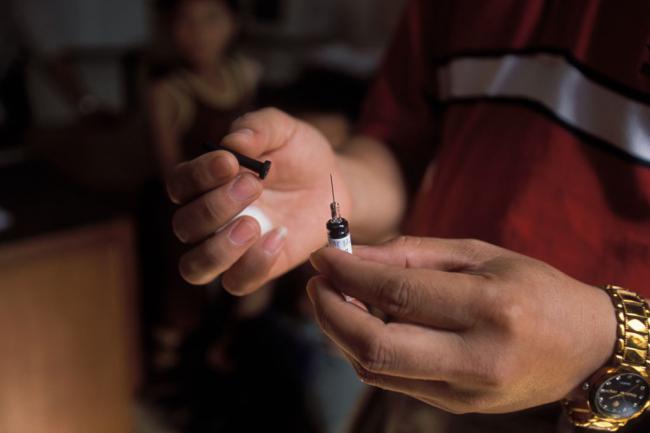
On World Day, UN urges rabies control beyond human and animal health services
“Prevention of bites in the first place should be an emphasis of any rabies programme. When a child gets bitten the mother needs to know to wash the wound and to contact a local health worker. Most people who get bitten are too poor to pay for treatment and for transportation to facilities that carry the vaccine. We also need to help countries with forecasting their vaccine needs and building emergency stocks,” said Bernadette Abela-Ridder, Head of Zoonotic Diseases at the World Health Organization (WHO), in a message to observe the Day.
World Rabies Day is celebrated annually to raise awareness about rabies prevention and to highlight progress in defeating the disease. In addition, 28 September marks the anniversary of the death of Louis Pasteur, the French chemist and microbiologist who developed the first rabies vaccine.
The theme for 2016 is 'Rabies: Educate. Vaccinate. Eliminate,' which emphasizes the two crucial actions that communities can do to prevent rabies. It also reflects the global target to eliminate all human deaths from dog-mediated rabies by 2030.
Evidence suggests that the threat is especially prominent in areas struck by conflict and natural disasters. Experts have warned that unless coordination and awareness-raising go beyond the ministries of health and agriculture, too many animals and humans will continue to die unnecessarily from the disease, according to the Global Alliance for Rabies Control, a leading organization working for the global prevention of rabies. The organization partners with WHO and the UN Food and Agriculture Organization (FAO), among others.
“People live, work and flee with their dogs. We need to change the way ministries work together to roll out regular mass dog vaccination campaigns, to provide more protection in times of peace, conflict and natural disasters,” said Louis Nel, Executive Director of the Global Alliance for Rabies Control. “We have the vaccines and we know they work, so how is it possible that so many people and animals continue to die from this painful, long-known disease?”
Though rabies is present in wildlife, more than 95 per cent of the disease is spread via dogs.
On the basis of data and evidence collected by the World Organisation for Animal Health, a rise in rabies cases among dogs has been observed in parallel to political instability periods in some North African countries during the past decade.
Photo: UNICEF/Jim Holmes
Source: www.justearthnews.com
Support Our Journalism
We cannot do without you.. your contribution supports unbiased journalism
IBNS is not driven by any ism- not wokeism, not racism, not skewed secularism, not hyper right-wing or left liberal ideals, nor by any hardline religious beliefs or hyper nationalism. We want to serve you good old objective news, as they are. We do not judge or preach. We let people decide for themselves. We only try to present factual and well-sourced news.







